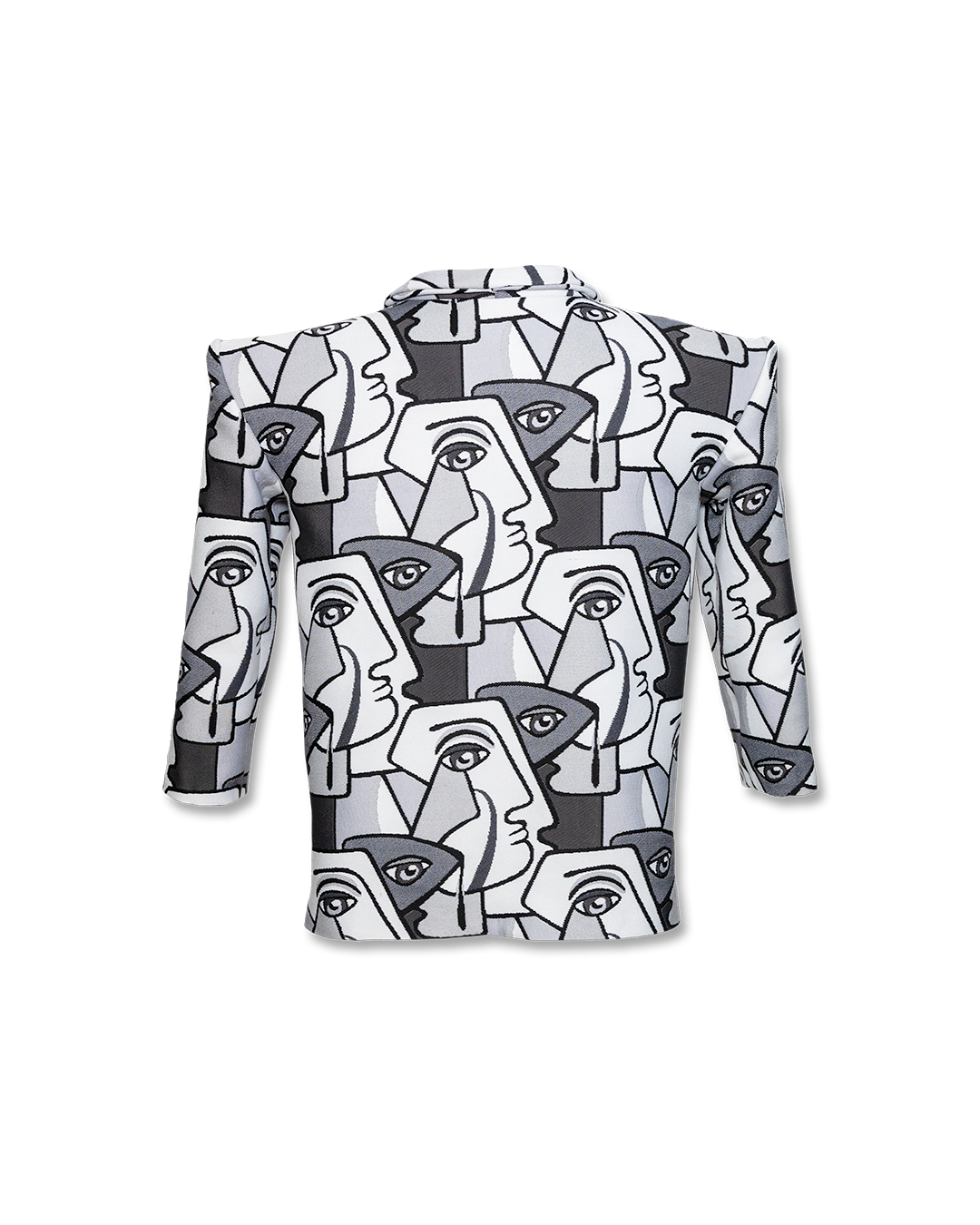

DISTORTED IDENTITY BLAZER
Part of the LAYERS collection, this one-of-a-kind suit is handmade in Spain by our skilled artisans, crafted from a striking, heavy fabric reminiscent of Tapisteria — a material traditionally used for upholstery. Featuring an exaggerated shoulder design, this piece embraces an oversized, sculptural silhouette that mirrors the distortion found in the world of body dysmorphia. The exaggerated shoulders, deliberately oversized and disproportionate, symbolize the warped perception of self-image, a central element of dysmorphia, where individuals perceive themselves in ways that are far from reality.
The Tapisteria fabric, with its distinctive, textured surface, carries the essence of the Cubism movement, pioneered by Pablo Picasso. Picasso’s use of geometric shapes and fragmented views was a revolutionary exploration of form and perspective, a theme mirrored in this garment. The angular, oversized shoulders evoke the same sense of distortion and fragmented identity that Picasso explored in his artwork.
The inclusion of this fabric, which is heavy and richly textured, adds a sense of opulence and exclusivity to the piece, yet the distortion it represents is not just aesthetic. It’s a reflection of the internal experience of body dysmorphia—where the self is seen through a skewed lens, and the image presented to the world can feel as disjointed as the abstract figures Picasso painted. The suit’s silhouette speaks to the internal struggle, the disproportionate fear of being “too much” or “not enough,” and the societal pressure to conform to distorted ideals.
The inclusion of a lining made from the same Tapisteria material ensures a seamless continuation of the theme—bringing the weight and density of the fabric into the interior of the suit as well, embodying the heaviness of the emotional burden carried by those grappling with body dysmorphia. The luxury and heft of the material, combined with the boldness of the exaggerated design, confront the viewer with the reality of this condition, both in its distorted sense of self and the struggle for acceptance.
This suit is more than just an item of clothing; it’s a statement—a representation of how one’s internal battles with self-image can be manifested in the physical world. It captures the essence of dysmorphia as an ongoing battle between perception and reality, between the world’s expectations and the truth of one’s own body.